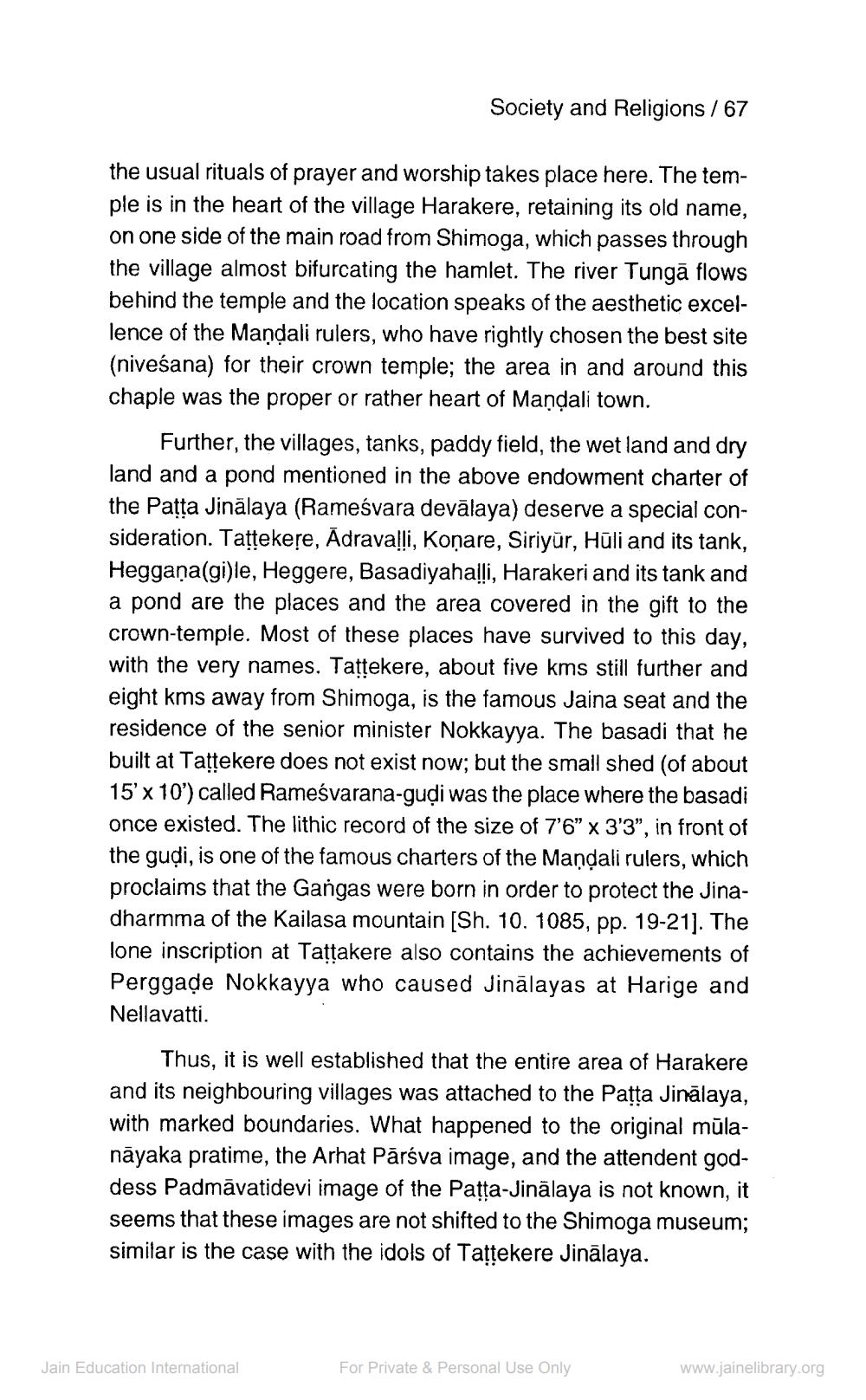________________
Society and Religions / 67
the usual rituals of prayer and worship takes place here. The temple is in the heart of the village Harakere, retaining its old name, on one side of the main road from Shimoga, which passes through the village almost bifurcating the hamlet. The river Tungā flows behind the temple and the location speaks of the aesthetic excellence of the Mandali rulers, who have rightly chosen the best site (niveśana) for their crown temple; the area in and around this chaple was the proper or rather heart of Mandali town.
Further, the villages, tanks, paddy field, the wet land and dry land and a pond mentioned in the above endowment charter of the Patta Jinalaya (Rameśvara devālaya) deserve a special consideration. Tattekese, Ādravalli, Konare, Siriyūr, Hūli and its tank, Heggana(gi)le, Heggere, Basadiyahalli, Harakeri and its tank and a pond are the places and the area covered in the gift to the crown-temple. Most of these places have survived to this day, with the very names. Tațțekere, about five kms still further and eight kms away from Shimoga, is the famous Jaina seat and the residence of the senior minister Nokkayya. The basadi that he built at Tattekere does not exist now; but the small shed (of about 15' x 10') called Rameśvarana-gudi was the place where the basadi once existed. The lithic record of the size of 7'6" X 3'3", in front of the guļi, is one of the famous charters of the Mandali rulers, which proclaims that the Gangas were born in order to protect the Jinadharmma of the Kailasa mountain (Sh. 10. 1085, pp. 19-21]. The lone inscription at Tattakere also contains the achievements of Perggade Nokkayya who caused Jinālayas at Harige and Nellavatti.
Thus, it is well established that the entire area of Harakere and its neighbouring villages was attached to the Pasta Jinālaya, with marked boundaries. What happened to the original mūlanāyaka pratime, the Arhat Pārsva image, and the attendent goddess Padmāvatidevi image of the Patta-Jinālaya is not known, it seems that these images are not shifted to the Shimoga museum; similar is the case with the idols of Tastekere Jinālaya.
Jain Education International
For Private & Personal Use Only
www.jainelibrary.org




